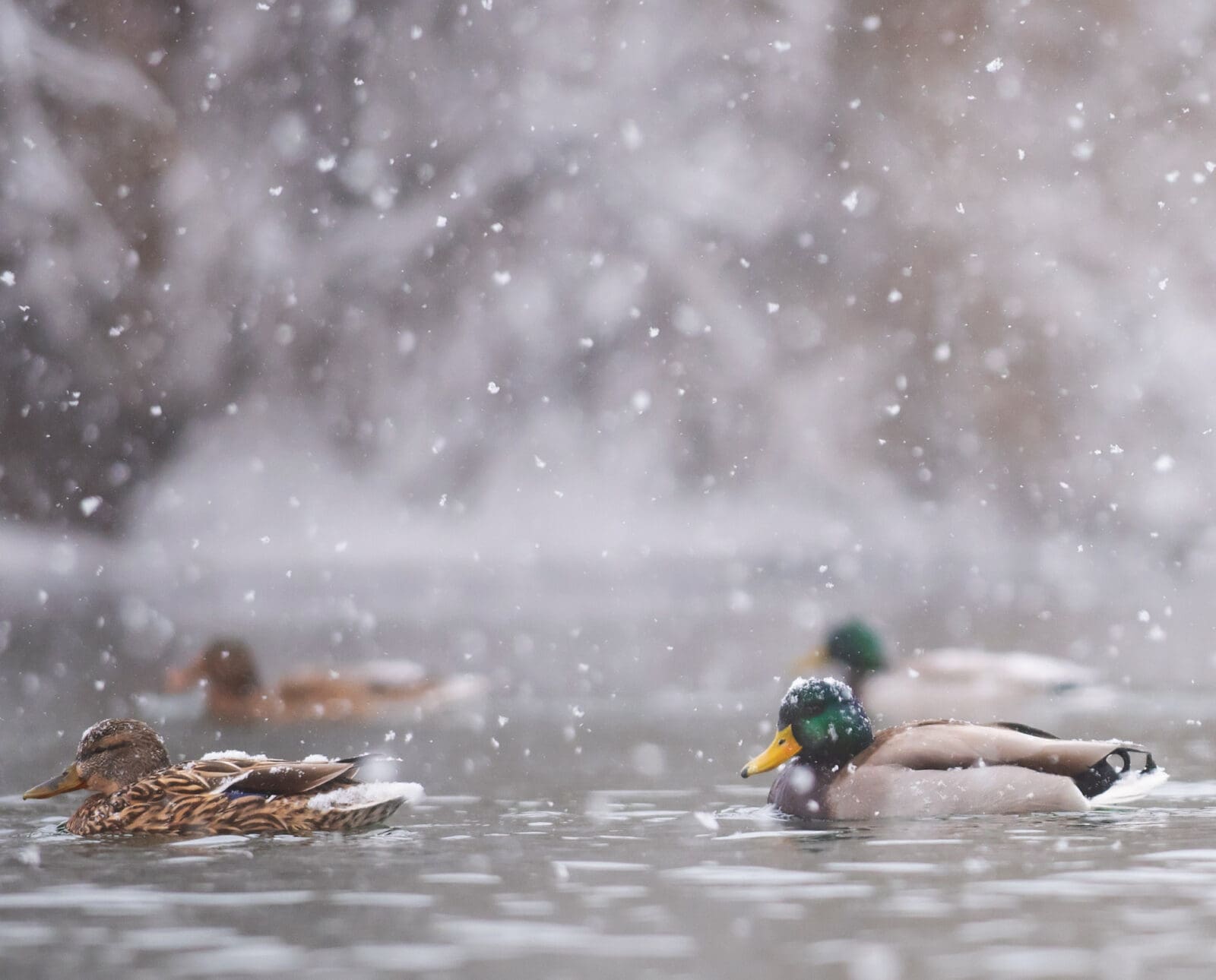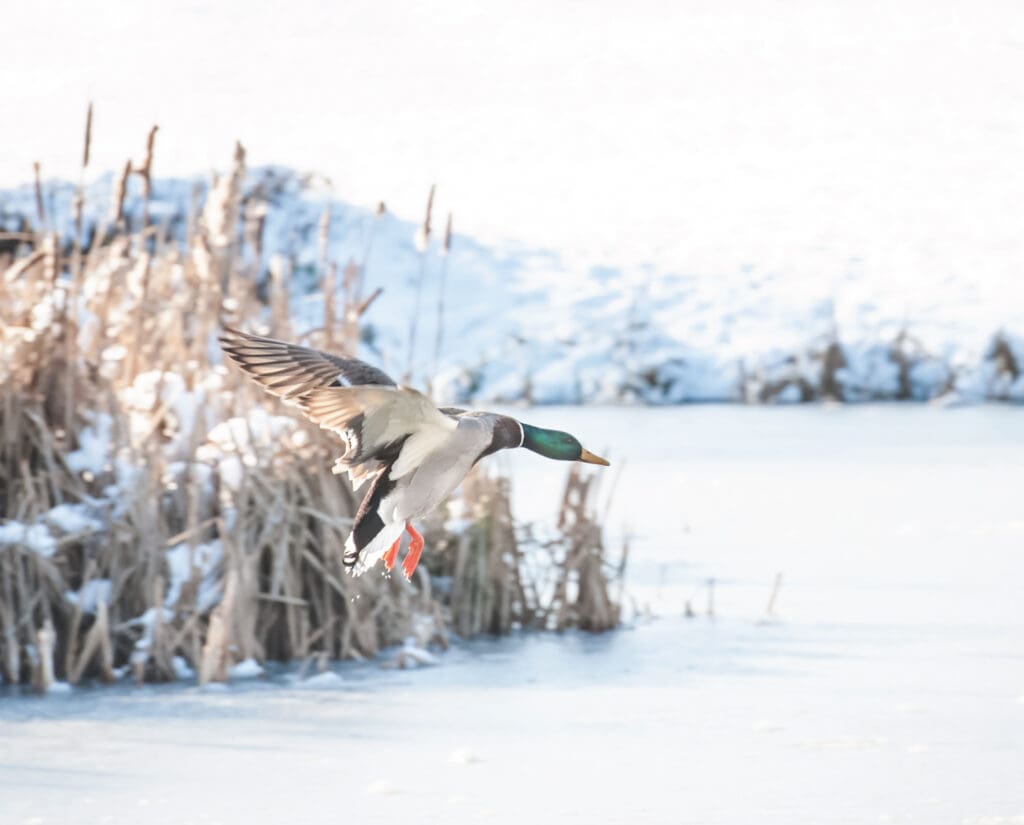Home » Waterfowl Hunting » How to Jump Shoot Ducks in the Winter
How to Jump Shoot Ducks in the Winter

Homer Raymundo is a father, husband, firefighter who spends his…
Dive into the tactic of jump shooting ducks during the winter with these essential tips to maximize those colder days with a heavy game bag.
When winter sets in, the mornings become considerably colder, and the air feels like a whip against any uncovered skin. No one understands this better than the waterfowl hunter. The season starts where summer and fall meet. As December arrives and winter becomes official, the crowds diminish with the arrival of the ice. The waterfowl hunters who persist and venture into this season often find some of the best opportunities. Open water is a welcome spot for ducks to land. Consequently, the best opportunities for jump shooting ducks arise once the ice sets in.
Listen to more articles on Apple | Google | Spotify | Audible
One of the places I like to hunt in the winter is filled with hot water springs that feed into a lake. When the ice forms, ducks don’t tend to stick around, but they do like to hang out in these open holes. The ice also drives the ducks to streams and canals—really, anywhere there is open, moving water. Most of these places tend to have food available for ducks, which is particularly helpful when heavy snow covers the ground. Access to food is important for ducks to stay warm. Being able to locate these food sources makes jump shooting even more effective.
Preparation for a day of jump shooting ducks
When I know I’m only going out to jump ducks, my preparation differs from when I’m sitting in a blind all day long. I dress for cold weather, but I don’t focus as much on thermal layers. Since I’ll be staying mobile and am likely to get hot in my waders, in some cases, hip waders might even be the better choice depending on the depth of the waters I hunt in. Many rivers have plenty of shallow spots for crossing, and full waders can be cumbersome when hiking. My waders tend to rub at the knees, making hiking both annoying and loud. Staying quiet is an important part of sneaking up on resting ducks.
Another aspect of my preparation involves scouting for good spots by e-scouting for ducks. I use OnX Hunt to view satellite images, which help me identify additional spots that could be promising for hunting. Usually, I can plan a path of travel to utilize the terrain to my advantage. I’ve learned that using cover, such as bushes and cattails, can make it easier to approach ducks stealthily. It’s also beneficial to see a topographic map to identify small ridges along my path. Ducks are easily spooked, so if I can circumvent a small hill and surprise them, the extra distance walked is worth it.
The other things I carry include my shotgun shells, a duck strap, shooting earplugs, and a means to retrieve the ducks. Carrying shotgun shells is obvious. I prefer Hevi Steel because it patterns well in my shotgun and is cost-effective. The duck strap is particularly useful when jumping ducks over multiple locations. Last season, I shot a double of drake mallards. Anticipating more ducks along the way, having my ducks rigged to my duck strap allowed me to keep my hands free for my shotgun, enabling my subsequent shots. Hearing protection is also crucial. I use Decibullz, and while there are many different brands, the key is to hear clearly while still being protected. Most ducks give a warning quack before taking off, so it’s essential to be able to react to the concussion from the shotgun fire but still hear the departing ducks’ quacks. Finally, having a way to retrieve ducks that fall into deep water beyond the reach of your waders is important. I carry a tow strap, while a friend of mine uses a small fishing pole with a bobber that he can cast over the duck to retrieve it safely to shore.

Tips and tactics for jump shooting ducks
To have a successful hunt, I consider several different factors. First and foremost is scouting. I’ll sit in a high spot in my truck and just watch the ducks fly around. It’s a good time to listen to podcasts or music and observe the skies for movement. I prefer to do this during heavy hunting periods because the shooting and movement put more ducks in the air, searching for spots where they aren’t likely to be hunted. During slower times, I observe patterns and note the times ducks are in certain areas.
Plan your movements carefully. Don’t just walk along a canal and hope for the best. Ducks spook easily, especially later in the season. Even a twig breaking underfoot can send a flock flying out of range. The key strategies involve using terrain features for cover and anticipating the ducks’ locations. I always use binoculars to look further down a canal or to discreetly observe a pond. This way, I know where the ducks are, and I can move within range cautiously. If they take off, I’m ready to shoot, and ideally, I position myself perfectly for the shot. When choosing a path, I look for clear areas to walk along that have tall vegetation nearby. This approach allows me to control my steps better and get closer to the ducks.
Get out and get shooting
Jump shooting ducks can be a lot of fun and is also an excellent way to introduce new hunters to the sport. This approach is more active than sitting in a blind all day, waiting for ducks to come. While winter creates better opportunities, jump shooting ducks is a viable option throughout the entire season. Ice reduces the areas where ducks can congregate, which in turn creates better opportunities for areas known to remain open. Whether moving from pond to pond or walking along a canal, these tactics can significantly aid in jump shooting ducks during the winter.
Homer Raymundo is a father, husband, firefighter who spends his days outside chasing all kinds of fowl. He writes a blog and articles for magazines with a goal of sharing lessons he’s learned with other hunters as a way to promote hunting.




